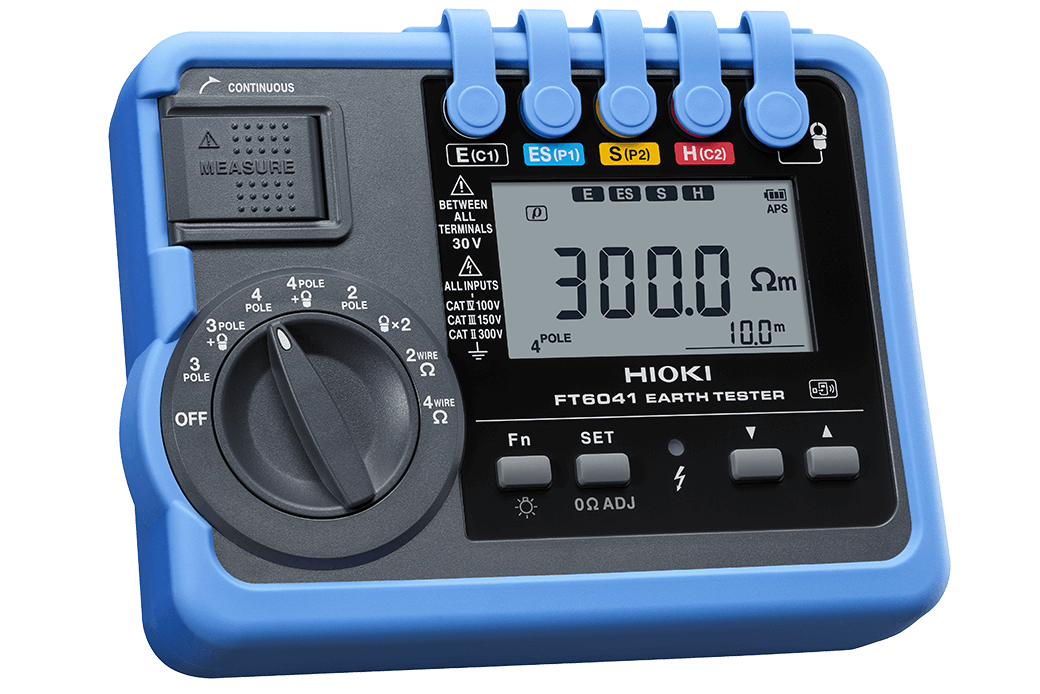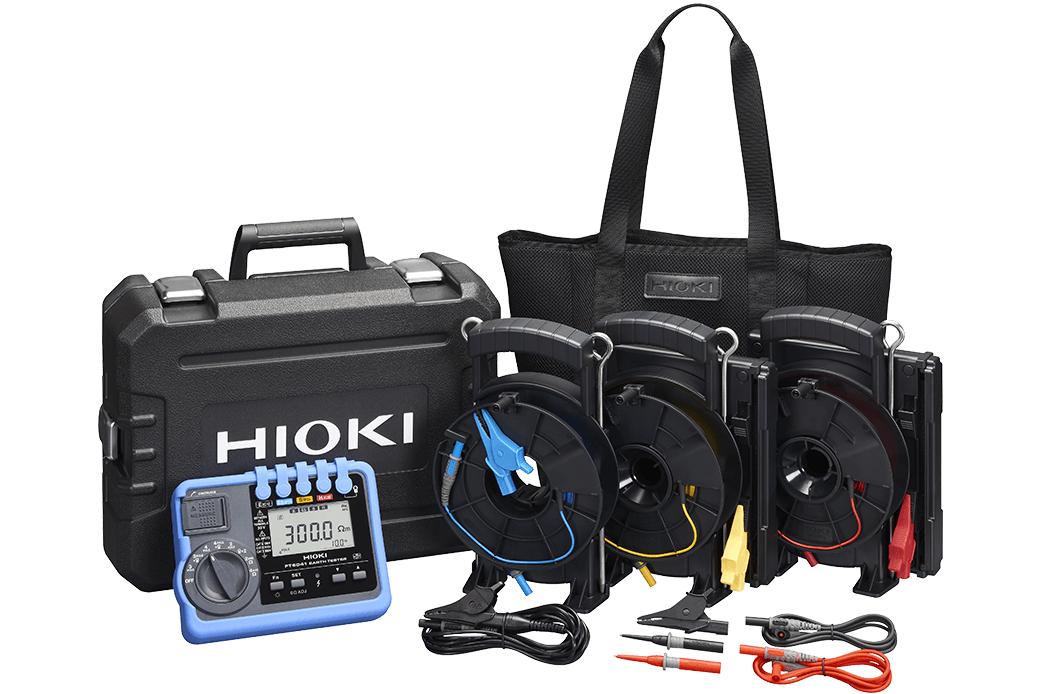HIOKI FT6041-91 4-POLE EARTH TESTER (includes clamp sensors FT9847 and CT9848)
Specifications
Details
HIOKI FT6041-91 4-POLE EARTH TESTER (includes clamp sensors FT9847 and CT9848)
Field-capable, Fast-working
Extensive measurement functionality


Key Features
- Compatible with 4-pole method
- Measure ground resistance without disconnecting ground electrodes
- IP67 protected, built tough to withstand use at harsh sites
- Make measurements, even on concrete by using Earth Nets Module
- Fast measurement! Cord rewinding that doesn’t tangle or twist
- Clamp sensor (optional) to fit both narrow and wide bus bars
- Easily transfer measurement data to your smartphone or tablet by using our free app GENNECT Cross or to an Excel® file. (Wireless Adapter Z3210 is necessary)
Model No. (Order Code)
| FT6041 | FT6041 with included accessories |
|---|---|
| FT6041-91 | FT6041 with included accessories, also includes clamp sensors FT9847 and CT9848 |
View more about HIOKI FT6041-91 4-POLE EARTH TESTER (includes clamp sensors FT9847 and CT9848) on main site

